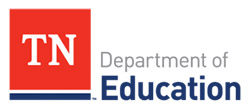 Nashville, TN – The Tennessee Department of Education released a report that analyzes the outcomes at schools that implemented a statewide model focused on addressing students’ individual learning needs, called Response to Instruction and Intervention (RTI2).
Nashville, TN – The Tennessee Department of Education released a report that analyzes the outcomes at schools that implemented a statewide model focused on addressing students’ individual learning needs, called Response to Instruction and Intervention (RTI2).
Most notably, the report identifies what strategies have been used by schools that helped a high percentage of their non-proficient third grade students move to proficiency in English language arts and math between the 2013 and 2015 school years.

The program rolled out statewide in elementary schools in 2014-15 and is being used in all grades this year.
The new report, Supporting Early Grades Student Achievement: An Exploration of RTI2 Practices, is the first to explore implementation of RTI2. The report uses data from in-depth interviews with school leaders and faculty to better understand the RTI2 implementation strategies more successful schools are using to effectively support the success of all learners.
“Each student is unique, and the RTI2 framework was designed to support every student at their specific level and area of need,” said Education Commissioner Candice McQueen. “We want to learn from schools that are seeing promising growth and share their strategies with educators across our state.”
Findings by the department show that although implementation looks similar across schools where teachers reported using almost all the key RTI2 components, student achievement data reveal that patterns of student growth vary considerably. The department identified four key differences that set apart schools where students made the most progress.
These schools:
- Use multiple data sources and keep constant communication among staff members to guide the RTI2 decision-making process
- Build strong RTI2 teams with specialized role-players who are well-equipped to support student success
- Use all available resources to create staggered, grade-level intervention periods and allocate space for small group work
- Have strong leaders who encourage collective responsibility and engagement and learn from the early stages of RTI2 implementation to make changes and improve
The department is continuing to use a variety of data collection tools to gather meaningful information about RTI2 implementation across the state, in addition to providing in-person trainings to educators to further support best practices for implementation of RTI2. The complete report is available online here.
For more information on the report, contact Zachary Stone at Zachary.Stone@tn.gov.



